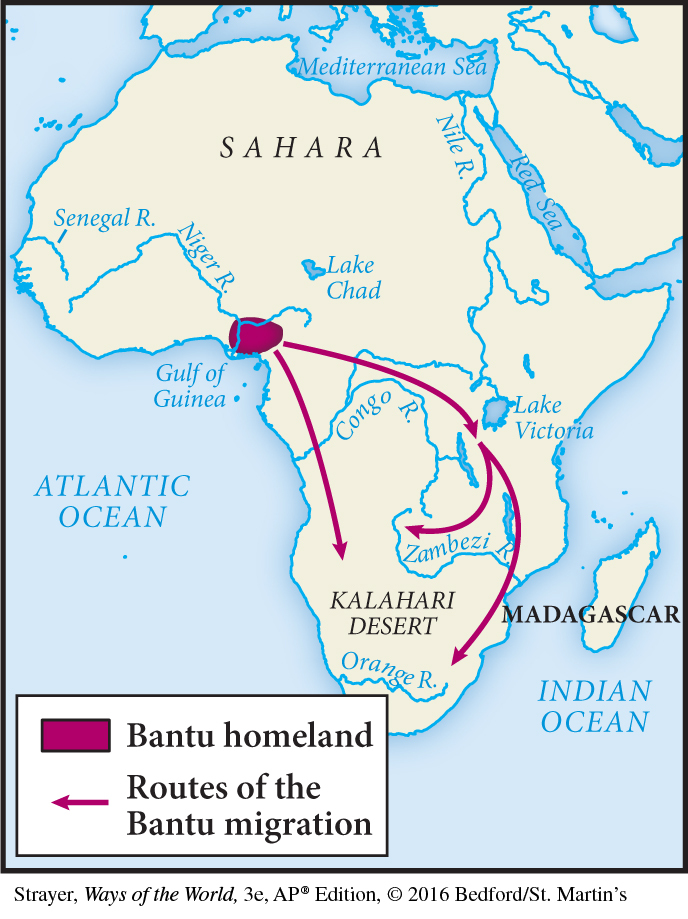Triumph and Resistance
AP® EXAM TIP
Questions about the Bantu migrations are common on the AP® exam.
Some combination of diffusion and migration underpinned the spread of agriculture to new regions, and the adoption of farming practices was at times accompanied by the spread of languages as well. For instance, between 6500 and 4000 B.C.E. the agricultural package of Southwest Asia spread into Europe, Central Asia, Egypt, and North Africa. In the case of Europe, the adoption of agriculture was accompanied by the spread into the region of Indo-

The globalization of agriculture was a prolonged process, lasting 10,000 years or more after its first emergence in the Fertile Crescent, but it did not take hold everywhere. The Agricultural Revolution in highland New Guinea, for example, generated a number of domesticated plants including yams, taro, bananas, and sugarcane. But while these spread to parts of Island Southeast Asia, they did not pass to the nearby peoples of Australia, who remained steadfastly committed to gathering and hunting ways of life. The people of the west coast of North America, arctic regions, and southwestern Africa also maintained their gathering and hunting economies into the modern era. A very few, such as the Hadza, described at the beginning of this chapter, practice it still in vanishing numbers.
Some of those who resisted the swelling tide of agriculture lived in areas unsuitable to farming, such as harsh desert or arctic environments; others lived in regions of particular natural abundance, so they felt little need for agriculture. Such societies found it easier to resist agriculture if they were not in the direct line of advancing, more powerful farming people. But many of the remaining gathering and hunting peoples knew about agricultural practices from nearby neighbors, suggesting that they quite deliberately chose to resist it in favor of the freer life of their Paleolithic ancestors.
Nonetheless, by the beginning of the Common Era, the global spread of agriculture had reduced gathering and hunting peoples to a small and dwindling minority of humankind. If that process meant “progress” in certain ways, it also claimed many victims as the relentlessly expanding agricultural frontier slowly destroyed gathering and hunting societies. Whether this process occurred through the peaceful diffusion of new technologies, through intermarriage, through disease, or through the violent displacement of earlier peoples, the steady erosion of this ancient way of life has been a persistent thread of the human story over the past 10,000 years. The final chapters of that long story are being written in our own times. (See Zooming In: Ishi, the Last of His People for a recent example of this process.) After the Agricultural Revolution, the future, almost everywhere, lay with the farmers and herders and with the distinctive societies that they created.